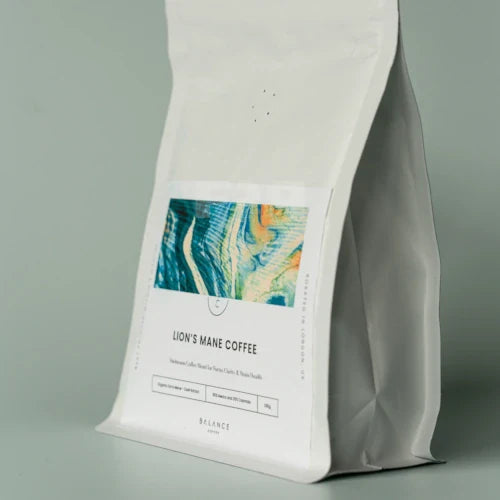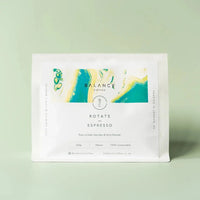Do you remember that first, double espresso shot you tried at home? Yeah, mine was a disaster, too. I wanted that coffee shop espresso magic in my kitchen, but I only got a bitter, watery mess.
I tried it again, but it just didn’t work. It was around ten years ago that I was new to the espresso game, and it seemed to me that one needed a degree in making a double espresso to get the taste, richness, and experience just right.
And the equipment – where did one even start? The shelves were always packed with fancy machines and gadgets. Did one need all that stuff just to make a decent espresso?

But here's what I found in my decade-long coffee industry experience. You don't have to be a pro to make a great double espresso at home.
It's about keeping it simple, knowing a few tricks, and a bit of trial and error.
In this post, I’m peeling back all the layers. You'll get no-nonsense, easy advice that works – the tips I wish I had when I started making double espresso at home.
What is a Double Espresso?
So, what’s a double espresso, and why is it so important in your life? A double espresso, or 'doppio' as the Italians call it, is exactly what it sounds like – two espresso shots in one cup.
Each shot of espresso typically uses about 7-9 grams of coffee, so a double espresso shot takes roughly double that amount. The result?

You get a more intense, richer coffee experience in a small, powerful package. You’ll find it perfect for those mornings when you need an extra kick to get through a hectic day.
Double Espresso Importance in Coffee Culture
In coffee culture, the double espresso holds a special place. It's the soul of many of our favourite coffee drinks.
Just think about your lattes, cappuccinos, flat whites and other coffee drinks? They all start with a good double espresso shot.

But it's not just about being a key ingredient. For many coffee lovers like me, sipping a double espresso is an experience in itself. It's a moment to enjoy the pure, unadulterated taste of coffee.
And this experience is even better when you learn how to make a perfect-tasting double espresso.
Double espresso stands out for its simplicity and intensity in a world of sugary, creamy coffee drinks.
Double Shot Espresso History and Popularity
The story of the double espresso is the story of espresso itself. Espresso was born in Italy in the early 1900s, thanks to the invention of the espresso machine.
A double shot was derived from the Italian term doppio, which means double in Italian.

This discovery was about making coffee faster and stronger, using high pressure to push water through finely ground coffee beans.
As espresso spread globally, so did its bolder sibling, the double shot. It gained popularity for its strong flavour and the quick jolt of energy it provided.
Today, it's a staple in coffee shops from Rome to London to New York. I think of it as a symbol of modern life – fast-paced, efficient, yet full of flavour and richness.
Selecting the Right Ingredients and Equipment
At first, I used to ask myself, ‘How do I make a double espresso that checks all the boxes?’
And then, after many hopeless trial and error sessions, I discovered the secret does lie in the beans and equipment.

So, let me walk you through how you can make a double-shot espresso with the right ingredients and equipment.
Best Coffee Beans for Double Espresso
Without premium and freshly roasted coffee beans, you can’t expect a double espresso that gives you the kick and flavour you need.
Here’s my tried and tested criteria for picking the best coffee beans for espresso:
| Criteria | Description |
|---|---|
| Bean Quality | 100% Arabica beans free of nasties like mould, mycotoxins and pesticides are the best for espresso. |
| Roast Level | Dark roasts are traditional for double espresso due to their strong flavour and less acidity. |
| Bean Freshness | Fresh beans are essential for a great espresso. Look for beans roasted within the past two weeks. |
| Origin | Single-origin beans can offer unique flavours, but blends are often preferred for a balanced taste. |
| Grind Consistency | A fine, consistent grind is key for espresso. It affects the extraction and overall flavour. |
| Aroma and Flavor Notes | Look for beans with rich, complex flavours. Chocolate, nutty, or caramel notes are popular in espresso. |
| Acidity and Body | A low to medium acidity balance and a full body enhance the espresso experience. |
But doing all the legwork to find espresso beans that meet the above criteria is no joke. It takes a lot of time and effort. You must review all these details and look for customer reviews on those beans.
However, if you’ve got no time to waste, I’ll share my pick with you. The Rotate Espresso by Balance Coffee, my brainchild, are one of the best beans you can use to make double espresso.
It’s certainly not because I’m the man behind the product. I tried and tested various beans for my double espresso recipe and found these to be perfect because:
- Premium Quality: 100% Arabica beans and speciality grade coffee.
- Packed With Health Benefits: Free of the nasties like mould, mycotoxins and pesticides that you find in commercial coffee. It has 1000 antioxidants and Vitamin B3 to power you through the day.
- Delicious: Packed with a full burst of chocolatey flavour that's perfect for double espresso.
- Freshly Roasted: Beans are dark and freshly roasted.
- Loved by customers: Top-rated and award-winning coffee that everyone keeps coming back to.
See why customers love the Rotate Espresso so much for yourself:
Jorge T Said: Amazing bean for espresso. Balanced with some dark chocolatey notes and an incredible body and mouth feel.
Matthew H Said: Love this rotate espresso. Discovered it from an online review and there is just no turning back. It makes my mornings so much more enjoyable being able to have excellent quality coffee at home.
Michael K Said: Loving Rotate in my Aeropress every morning. Timely subscription and cheaper than buying from a coffee shop. Full marks from me.
You can read the full review here.
Finally, click here to order it now and receive a £5 discount to enjoy special ground coffee FREE from mould, mycotoxins and pesticides and boost your ENERGY.
Choosing the Right Espresso Machine
The right machine can make all the difference when making double espresso at home.
However, choosing the right home espresso machine depends on your needs and requirements. But here’s what you should consider while picking the right machine.

Quality & Budget:
First, you must decide how much you're willing to spend. There are great options at various price points.
- Budget-Friendly: Look for machines with essential features like good pressure and temperature control.
- High-End: These often come with additional features like built-in grinders and more precise controls.
Also, you must think about the quality of the machines. Sage espresso machines offer the best value for money, in my experience.
Ease of Use:
Your current espresso-pulling skills also influence what machine you should get.
- For Beginners: Choose a machine that's user-friendly with straightforward functions.
- For Enthusiasts: If you’re more experienced, you might prefer a machine with more manual controls.
Size and Capacity:
You must also consider how much counter space you have and your daily coffee consumption.
- Small Kitchens: Compact machines that don’t compromise on quality are available.
- Frequent Use: Opt for a machine with a larger water reservoir.
Maintenance:
Lastly, look for machines that are easy to clean and maintain. Regular cleaning is crucial for good espresso.
Importance of Freshness in Ingredients
You need fresh ingredients to get the most out of your double espresso coffee recipe. Yes, that’s a no-brainer.
Use my tips to get started:
Coffee Beans:
- Freshness: Always use freshly roasted beans, ideally within two weeks of roasting.
- Storage: Keep your beans in a cool, dry place in coffee storage containers to preserve their freshness.
Water Quality:
- Filtered Water: Use filtered water if possible. It can make a significant difference in the taste of your espresso.
- Regular Changes: Change the water in your espresso machine daily to ensure freshness.
Milk (if used):
- Freshness: Always use fresh, cold milk for the best foam and texture in milk-based espresso drinks.
- Quality: Opt for higher-fat content milk for creamier and richer froth.
Preparing the Espresso
And now, finally, the moment you’ve been waiting for. So, how do you make a double espresso at home that tastes and feels amazing?
I follow a few key steps to get it right each time. And don’t forget, each step is important, so don’t skimp on anything.

Grinding Coffee Beans: Achieving the Perfect Consistency
To get your recipe for double espresso coffee right, you need to grind the beans to the perfect size and texture.
- Grind Size: You need a fine grind for espresso, but not too powdery. The texture should be somewhere between table salt and flour.
- Consistency: Ensure your grind is uniform. Inconsistent grinds can lead to uneven extraction.
- Grinder Type: Burr grinders are better in my experience for consistent grind size.
- Freshness: Grind your beans before brewing to maintain the coffee's flavour and aroma.
Dosing and Tamping Techniques
Next up, dosing and tamping! In this step, you need to get the right amount of coffee and pack it correctly.
Here, you must be careful about how many grams of coffee you use for double espresso.
- Dosing: Use about 14-18 grams of coffee for a double espresso. This can vary slightly depending on your machine and preferences.
- Tamping Pressure: Apply firm, even pressure when tamping. Aim for about 30 pounds of pressure. And let’s not forget that consistency is key.
- Level Surface: Ensure the surface of your tamped coffee is level. An uneven surface can cause water to channel through your coffee unevenly, affecting the taste.
Brewing Time and Temperature Insights
And finally, we get to brewing, where your timing and temperature play an important role.
- Ideal Temperature: The optimal brewing temperature for espresso is around 195°F to 205°F (90°C to 96°C).
- Brewing Time: A good double espresso shot should take 25-30 seconds. If it’s faster, your grind may be too coarse; if slower, too fine.
- Consistency: Keep your brewing time and temperature consistent to ensure predictable and repeatable results.
How To Make Double Espresso With Machine
Making a double espresso coffee at home can be a delightful and rewarding experience.
You can pull the perfect shot every time with the right technique and practice, just like I do now.

I’ll share my tips and tricks on how to make a double espresso with a coffee machine to make it perfect each time.
Step-by-Step Guide to Pulling a Double Espresso Shot
- Preheat Your Machine: Start by turning on your espresso machine to heat it. A warm machine is crucial for a great espresso.
- Grind the Beans: Grind your coffee beans to a fine consistency. Remember, the grind should be fine and powdery.
- Measure the Coffee: Aim for about 14-18 grams (the double-shot espresso gram standard) for a double-shot espresso espresso. Use a scale for accuracy.
- Tamp the Grounds: Distribute the grounds evenly in the portafilter and tamp down firmly and evenly, applying about 30 pounds of pressure.
- Pull the Shot: Lock the portafilter into the machine and start the extraction. A proper double shot should take about 25-30 seconds.
- Serve Immediately: Pour the espresso into a warm cup and serve immediately for the best flavour.

Yes, it’s that easy. But there are a few more things you need to get a grip on to pull off barista-like skills at home.
Understand Coffee to Water Ratio
- Ideal Ratio: The standard ratio for espresso is about 1:2, meaning for every gram of coffee, you use two grams of water. This can vary slightly, so feel free to adjust to your taste.
- Consistency: Consistency in your coffee-to-water ratio is key to achieving the same taste every time.
Experimenting with Your Double Espresso to Find Your Favourite Flavour
Okay, so here’s the part where you get to be creative while mapping out how to make a double espresso coffee for yourself. It doesn’t have to be boring.
Here are a few things you can safely try without ruining your beverage:
- Try Different Beans: Each type of bean will give a different flavour profile to your espresso. Experiment with various beans to find your favourite. (You can also try out single origin beans for unique flavours).
- Adjust the Grind: Slight adjustments in the grind size can significantly affect the flavour of your espresso. Finer grinds extract more flavour but can make the espresso bitter if over-extracted.
- Play with Ratios: Slightly altering the coffee-to-water ratio can help you find the perfect balance for your taste.
- Add Milk: For a double espresso with milk, add steamed milk to create a latte or cappuccino. The milk can smooth out the espresso's intensity and add a creamy texture.
Remember, making espresso is an art as much as a science. Feel free to experiment and tweak the process to suit your taste—this way, you’ll learn how to make a double espresso that tastes the best.
And make sure you enjoy the journey of discovering your perfect cup of double espresso coffee!
How to Make Double Espresso Without a Machine?
Don’t have a double espresso coffee machine on your hands? Don’t worry. You can still enjoy your concentrated and delicious double espresso.
Just make sure you follow my steps on how to make an espresso shot without a machine. And you’ll be good to go!

Here's how to achieve that intense coffee experience with some alternative methods:
Using a Stovetop Moka Pot
- Fill the Bottom Chamber: Pour hot water into the bottom chamber of your Moka pot up to the safety valve.
- Add Coffee: Place 18-20 grams of finely ground coffee into the filter basket. Level it off, but don’t tamp it down.
- Assemble and Heat: Screw the top and bottom together. Place the Moka pot on a stove over medium heat.
- Brewing: When water boils, it will create pressure that forces the water through the coffee into the top chamber. Once you hear a hissing sound, your espresso is ready.
- Serve: Pour the coffee immediately into a cup. It will be stronger than regular coffee but slightly less concentrated than a traditional espresso shot.
Using a French Press
- Boil Water: Boil water and let it cool for about 30 seconds.
- Add Coffee: Add about 30 grams of medium-to-ground coffee to your French press precisely.
- Brew: Pour hot water into the French press, covering the grounds. Let it steep for about 4 minutes.
- Plunge: Press down the plunger slowly.
- Serve: Pour the coffee into a cup. It will be more similar to a strong coffee than an espresso, but doubling the amount of coffee grounds can mimic the intensity of a double espresso.

Lastly, you can also use an Aeropress for a beautiful espresso shot. I’ve tried and tested these methods, so they’ll give you a concentrated espresso shot.
Pro Techniques and Tips:
Are you ready to upgrade your espresso game? Great, because I have just the proper techniques and tips you need.
Pressure Profiling and Extraction Quality
- Understanding Pressure Profiling: This is about varying the water pressure during extraction. By adjusting the pressure, you can change the flavour and body of the espresso.
- Pre-Infusion: Start with a low-pressure pre-infusion to soak the grounds gently, which helps achieve a more even extraction.
- Pressure Curve: Experiment with different pressure levels during the extraction. A higher pressure can enhance the extraction rate, while a lower pressure can highlight different flavour notes.
- Consistency: The key to mastering pressure profiling is consistency and note-taking. Record your results to understand the impact of different pressure settings. This is what I used to do.
Troubleshooting & Fixing Common Espresso Issues
- Sour Espresso: If your espresso is sour, it’s often under-extracted. Grind your coffee a bit finer, increase the brewing temperature, or extend the extraction time.
- Bitter Espresso: A bitter taste usually indicates over-extraction. Try a coarser grind, lower the brewing temperature, or shorten the extraction time.
- Uneven Crema: This can be because of uneven tamping, or you used stale coffee beans. Ensure your tamping is level and consistent, and always use fresh beans.
- Channelling: If water channels through the coffee puck, it can cause uneven extraction. Ensure an even and firm tamp, and consider the distribution of your coffee grounds in the portafilter.
Customising Your Double Espresso
- Experiment with Bean Varieties: Different beans can dramatically change the flavour profile of your espresso. Try coffee blends and beans from various regions and roast levels to find your preference.
- Play with Milk and Additives: For a double espresso with milk, experiment with different types of milk or milk alternatives to find your preferred taste and texture. I always enjoy adding unique spices like cinnamon for a unique twist to my double espresso.
Serving and Presentation
If there’s one other important thing you need to know, it is that the way you serve and present your double espresso impacts your experience.
Just think about your cafe-style coffee beverages. What makes them so special? It’s mostly the fancy presentation and patterns you see on it.
So, to help you enjoy and make cafe-style espresso at home, here are some simple yet effective ideas for serving and pairing your espresso.
Ideal Cups and Presentation Styles
- Espresso Cups: Use small, thick-walled espresso cups to retain heat. Opt for white cups to appreciate the colour of the espresso.
- Presentation: Serve with a small spoon and a napkin.
Pairing with Foods and Other Beverages
- Sweet Treats: You can pair your double espresso with dark chocolate or biscotti for a classic combination.
- Breakfast Foods: You can also enjoy your espresso with croissants or pastries in the morning for a delightful start to your day.
- With Alcohol: For an evening twist, pair with a small glass of amaretto or a coffee liqueur. Try this if you have a special someone coming over for dinner.
Health and Wellness Considerations
If you know me, you’ll know I’m all about health and wellness. I founded Balance Coffee to give everyone a cup of wellness disguised as delicious coffee.
So let me share a few health considerations that will help you enjoy double espresso coffee benefits:
Caffeine Content and Health Implications
- Caffeine Levels: A double espresso typically contains 125-185 mg of caffeine. Modifying your intake is vital to avoid side effects like restlessness or heart palpitations.
- Sensitivity: Individual tolerance to caffeine varies. Pay attention to how your body reacts, especially if you experience jitters or disrupted sleep.
- Health Benefits: Moderate coffee consumption has been linked to various health benefits, like improved mental alertness and potential long-term protective effects against certain diseases.
Dietary Considerations and Alternatives
- Milk and Dairy: If you have lactose intolerance or dairy sensitivities, consider plant-based alternatives like almond or oat milk.
- Sugar and Sweeteners: To reduce your sugar intake, opt for natural sweeteners or enjoy your espresso without any added sweeteners.
- Decaf Option: If you’re sensitive to caffeine or want to enjoy espresso later in the day, go for a decaf double shot to enjoy the flavour without the caffeine.
Conclusion
And there you have it – a complete guide on how to make a double espresso at home! I've covered everything from choosing the right beans and equipment to the nuances of brewing and serving.
And remember, the key to great espresso is in the details: the grind, the pressure, the freshness of your ingredients.
But the most important thing? Don't be afraid to experiment as you learn how to make a double espresso. Each cup of espresso is an opportunity to refine your technique and discover what tastes best.
So, embrace your inner barista, play around with different methods and ingredients, and most of all, enjoy the journey.
Now, if you love speciality coffee beans for a great espresso, start here.
People Also Asked Questions
How Much Coffee Do I Need for a Double Espresso?
For a double espresso, use about 14-18 grams of coffee. This quantity ensures the right balance of flavour and intensity typical of a double shot.
What is the Ideal Brewing Time for a Double Espresso?
The ideal brewing time for a double espresso is 25-30 seconds. This duration allows for proper extraction, achieving a balanced taste.
Can I Make a Double Espresso Without an Espresso Machine?
You can use alternatives like a Moka pot, French press, or AeroPress to make a strong coffee that resembles a double espresso.
What is the Best Type of Coffee Bean for a Double Espresso?
The best coffee beans for a double espresso are typically dark-roasted, offering a rich and robust flavour, but preference varies, so experimentation is key.
How Do I Know if My Double Espresso is Well Made?
A well-made double espresso has a rich crema on top, a balanced flavour without bitterness or sourness, and a smooth, full-bodied texture.














